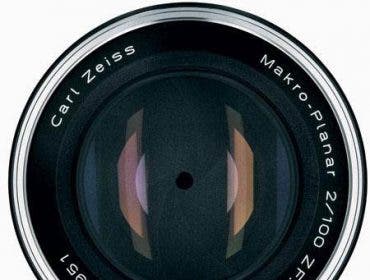It’s an industry favorite small condenser studio & stage microphone. Has the Shure SM81-LC stood the test of time?

The Shure SM81 has been a favorite of recording and live sound engineers since the late ’70s. That’s when Shure figured out how to build a great-sounding small condenser mic that was rugged enough to use on stage. It continues to be the go-to mic for many recording enthusiasts today.
In the Recording Studio or Live on Stage
If you’re putting together a studio mic inventory a pair of SM81s is the key to capturing the crystal, clear details of acoustic instruments like guitar, piano and cymbals. Their long, slim design makes them perfect for accurate positioning inside pianos, above drum kits, or close to fretboards. Having two allows you to beautifully capture a balanced stereo picture and paired up with a good preamp these microphones will make your tracks sparkle.
Because of their flat response and resistance to feedback, the SM81 is also good for live shows. Choirs, woodwinds, orchestras, background vocals, female voices or percussion-anything where an extended low end isn’t necessary will reproduce nicely. Note that you will need external phantom power to run the SM81 and some very long cables to reach the stage!
 Features
Features
Transparency
The SM81 is not the type of mic that adds a lot of character to the sound. Its flat response doesn’t hype any particular frequency. So, when you choose this mic you will be capturing only the true, uncolored sound of what you are recording. Having additional EQ and a good preamp will give you the option to bring out certain characteristics in the sound that might be lacking for some.
-10db Attenuator
If you’re finding it difficult to get the correct sound levels you need—“rolling off” a bit with the -10db pad on the SM81 will bring a loud instrument under control. You can more easily adjust your preamp and achieve the sound you want without distortion or overloading with the attenuator.
Selectable low frequency roll off (Flat, 6, 18db/octave)
These filters reduce the low end rumble that you wouldn’t want sneaking in and muddy-ing up your tracks when recording certain instruments like cymbals or percussion.
Uni-directional
The one directional, cardioid pattern allows you to focus the mic on the sound and to cut out unnecessary room noise.
Phantom powered
External phantom power from a mixing board is required to run these microphones.
In Use
Our studio purchased a pair of the SM81s mainly for recording acoustic instruments, drum overheads, piano and as a room mic. Immediately we heard a noticeable improvement over the cheaper, smaller condenser microphones we had been using. The cheaper condensers were much harsher sounding.
We love using the SM81 to track acoustic instruments. It gives an openness and smoothness to the tone of everything from mandolin to horns and percussion.
Recording a guitar in stereo with two SM81s at a 90 degree angle to each other, one at the neck and one near the sound hole, consistently gives us a track that has both sparkling highs and balanced lows. You just have to be on the alert for phase cancellation when miking an instrument in stereo.
When recording a drum kit in a multi-mic setup we always use a pair of the SM81s overhead to capture the top end. The SM81s high pass filters keep any low end in check that may bleed through. The power and bass response of the drum kit are picked up by other additional microphones more suited to those frequencies. The SM81s positioned overhead pick up the shimmer and cut of the cymbals to give an overall balanced drum sound.
We have an upright piano that we use the SM81s to record. The SM81s give the piano a nice top end but they can sound a little warm or wooly in the midrange. We remedy this by using a bit of EQ and are able to bring in some upper midrange to make the sound jump out of the mix.
Conclusion and Recommendation
These microphones are bullet proof and a must for your studio arsenal. The SM81 is suitable for use in a home or commercial studio and durable enough for live performances. We purchased a pair of SM81s over 10 years ago and they have held up to years of constant studio (ab)use with no signs of wear or problems. They are not overly expensive and we find they consistently give us impressive results in the applications they were designed for-mainly recording acoustic or delicate performances where transparency, detail and limited low end are desired.
That said we also feel it’s the type of mic some may have to grow into. The ruler flat frequency response is not going to make you immediately go “wow.” It may be necessary to work with the SM81 in conjunction with your EQs and preamps to get the desired result you’re trying to achieve. Overall, these mics are workhorses and you’ll use yours for years to come.




